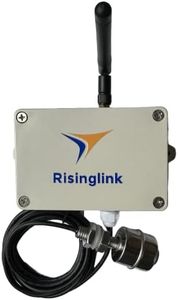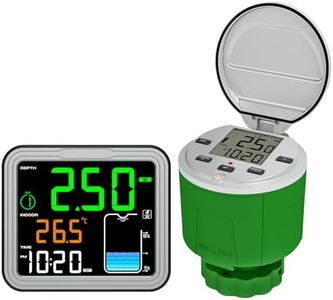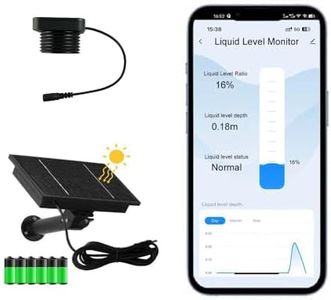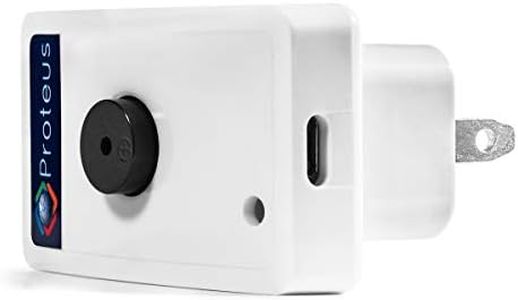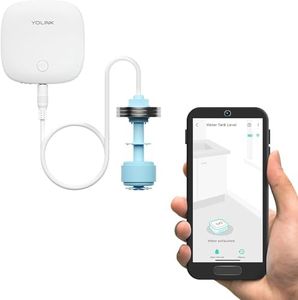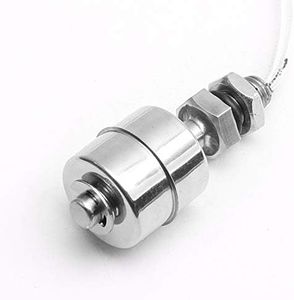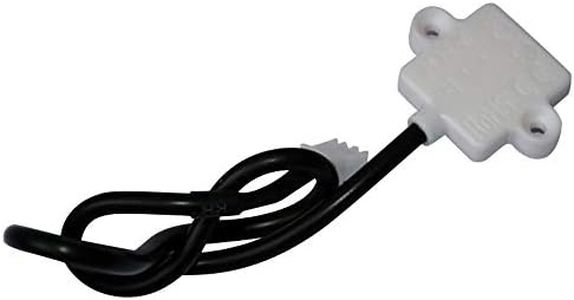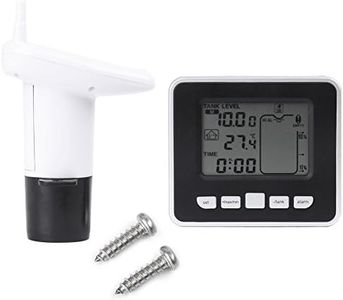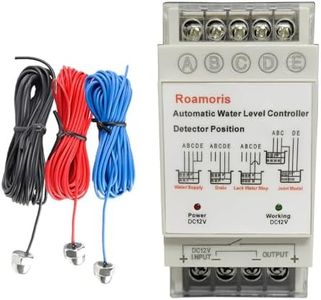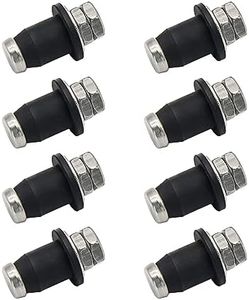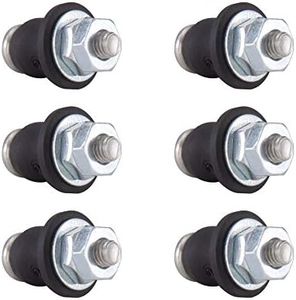We Use CookiesWe use cookies to enhance the security, performance,
functionality and for analytical and promotional activities. By continuing to browse this site you
are agreeing to our privacy policy
10 Best Water Tank Level Sensor
From leading brands and best sellers available on the web.Buying Guide for the Best Water Tank Level Sensor
Choosing the right water tank level sensor involves understanding how you plan to use it, the kind of tank you have, and the environment where it will work. These sensors help you monitor the amount of water in your tank so you can prevent overflows or running out of water. There are several types, each with different features and limitations. You'll need to think about things like how accurate you want the readings to be, how easy you want installation to be, and whether you want extra features like remote monitoring.Sensing TechnologyThis refers to the method a sensor uses to detect water levels, such as float, ultrasonic, capacitive, or pressure-based systems. The technology type determines sensor reliability, maintenance needs, and suitability for different tanks. Floats are basic and affordable but may get stuck or corrode. Ultrasonic sensors don’t touch water, resist scaling, and work with many tank shapes, but they need a clear space above the water. Capacitive and pressure sensors are good for closed or underground tanks. To choose the best type, consider the shape of your tank, cleanliness of the water, and whether you want something touch-free and low-maintenance.
Measurement RangeMeasurement range is the minimum and maximum distance or depth the sensor can accurately measure. A sensor with a range too short won’t cover your whole tank, while one with a very wide range might sacrifice some accuracy for everyday tank sizes. Pick a sensor that covers your tank’s full height, with a little extra allowance, to ensure you get useful readings at both low and full points.
Accuracy and ResolutionAccuracy tells you how close the reading is to the real water level, while resolution shows the smallest change the sensor can detect. Higher accuracy and better resolution give you precise control, which is important for critical uses (like industrial or health applications). For simple household use, standard accuracy is often enough; but if you need to know levels within centimeters or less, look for sensors with tight tolerances.
Output TypeSensors can show you information in different ways—some have direct digital displays, others signal a controller or even connect to your smartphone. Output can be analog, digital (on/off), or wireless. If you want to connect the sensor to an automation system or monitor remotely, choose models with suitable output (for example, wireless, Wi-Fi, or specific communication protocols). For a simple system, a local display or on/off alert may be enough.
Installation and CompatibilityNot every sensor is easy to install in every tank. Some require drilling or special mounting; others are drop-in or use adhesive. Consider where your tank is, whether you can easily access the top or bottom, and if it’s open or sealed. Also, check if the sensor material is compatible with the water (for example, if corrosive or drinking water is involved). Choose a sensor that fits your installation skills and your tank’s design.
Durability and MaintenanceThis relates to how well the sensor will last in your environment—exposure to sunlight, moisture, extreme temperatures, or dirty water can affect sensor lifespan. Some sensors are waterproof, UV-resistant, or made from materials that resist scale and corrosion. Maintenance is lower for non-contact types (like ultrasonic). For tanks exposed to tough conditions, or when you want long intervals between checks, pick more durable, maintenance-free designs.
